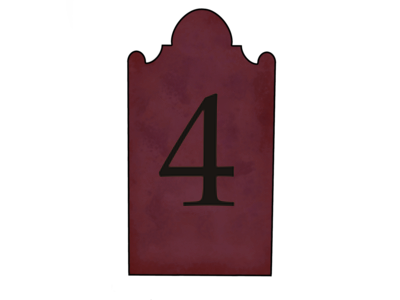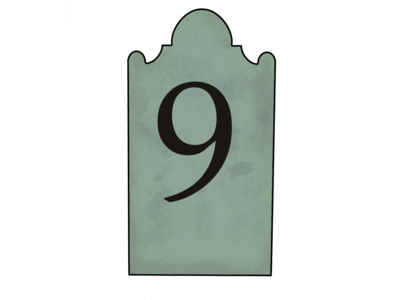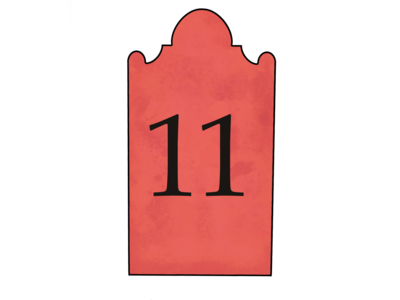Stone Carvers

Stone Carvers

Manning Family
Josiah Manning began carving gravestones in the early 1760’s. While many prominent carvers would start by modeling their work after another carver, Josiah would be influenced by the work of many gravestone carvers, including John Huntington, Gershom Bartlett, Obadiah Wheeler, Benjamin Collins, and the John Stevens Shop among others. Josiah’s early style would often feature wings reminiscent of the downswept wings of a bat, though by the end of the 1760’s he would begin using his signature upswept wing pair. It would not be long before Josiah became the dominant carver in the Windham area, and soon his sons Fredrick and Rockwell would learn the trade and begin carving stones of their own. Rockwell and Fredrick would move to Norwich in the 1780’s to set up shop though Fredrick would soon move back to Windham to assist his father in his work. Both Fredrick and Rockwell would carve in the same general style as their father, seldom using original designs. Of the two, Rockwell would be more experimental with his designs, occasionally carving stones with the hand of god outstretched from the clouds of heaven for example. The Mannings would largely use schist, most often from the Bolton quarry, though on some stones in the 1770’s Josiah would use an odd orange tinted soapstone that generally held up very well. Through the Revolutionary war, all the Manning boys were fierce patriots and would sign up to join the Continental army. They ended up being stationed in Bennington Vermont, where they would discover the high quality marble of its quarries, and after the war would import marble for use on gravestones for a number of their wealthiest patrons. When the dawn of the 19th century arrived, the increasing popularity of the urn and willow design would prompt the Mannings to begin carving markers of the new style, though they would not completely replace their usual designs. Josiah would die an old man in 1806 aged 81, and lies buried under a stone he carved and signed in the Windham Center Cemetery. Unfortunately both of Josiah’s sons would die considerably younger than him, Rockwell in 1804 aged 44, and Fredrick in 1810 aged 51.
The Mannings were the most prolific of any gravestone carvers in the region with over 2500 stones in Eastern Connecticut alone. The Mannings popularity extended further with scattered stones West of the Connecticut River, into the border towns of Massachusetts, Long Island, Rhode Island, and even the Carolinas.

Jotham Warren
Obadiah Wheeler was one of the early great carvers of Eastern Connecticut. Wheeler would begin carving stones around 1726, largely based off the designs of John Hartshorne with whom he may have apprenticed under. However, Wheelers work would greatly improve over the upcoming years, often featuring a variety of borders, great feathered rays of wings, and perhaps his favorite design trait, the hexafoil of which he would often use in rosettes and border patterns. Wheeler would become very popular in much of Eastern Connecticut, his stones can be found all over New London and Windham counties and beyond. Wheeler is often considered one of the greatest gravestone carvers of Colonial New England. Only one stone by Wheeler is in the Old Plainfield Cemetery. While one Wheeler’s plainest markers, one can note the very fine, consistent carvings and lettering, showing Wheelers skills even on his simplest work.

Elijah Sikes
Elijah Sikes was a prominent carver in much of Northeastern Connecticut in the latter half of the 18th century. He learned the trade from his father Joseph Sikes of Belchertown Mass, who would teach the family buisness to his son. Information becomes scarce after this point, though it is believed Elijah moved to Eastern Connecticut around 1780 due to the large number of stones present, which do not consistently spread into adjacent nearby parts of Massachusetts. He was a carver of great skill, carving almost expressionless long faced “souls” often without wings. His borders varied from detailed leafy vines, wormlike shapes, and sometimes geometric types, and he often included fine flower rosettes and crowns above the face. Perhaps most interesting he often carved “Memento Mori” above the face, something seldom done by other carvers in the region. The majority of his stones were carved on a brown tinted schist, though he was known to use grey schist, dark slate, and even marble though the latter was very rare. Sikes would carve nearly 200 stones in Connecticut, most ending up in the extreme western part of Windham County. Of his work in Connecticut, Plainfield has the third largest number of his stones, only behind Brooklyn and Thompson.

Benjamin Collins
Benjamin Collins was one of the great carvers of the Lebanon school. After moving from Massachusetts to Lebanon Crank (Now Columbia Connecticut), he would begin carving gravestones in the later part of the 1730’s. While influenced by the general styles of John Hartshorne and Obadiah Wheeler, Collins was also a skilled woodworker, and this extended into the designs he used on his gravestones. Collins would often deviate into using a great variety of different border patterns, some featuring different plant or floral patterns, while others appear very geometric like those we see on cabinetry. His cherubs were virtually always frowning, surrounded by a large array of wings, almost like that of a Native American headdress. Later, Collins would use a smaller bisected style for his wings, and would begin to incorporate hair on his cherubs. Collins would have several sons who would learn the stonecutting trade, including Julias, Abraham, and Zerubbabel, the latter of which would become an extremely prolific carver after moving to Vermont. Being a woodworker, Collins often carved fairly shallow lettering on his gravestone, which sometimes resulted in stones wearing poorly over time. After the deaths of several of his sons, an aging, heartbroken Benjamin would die in 1759, his tombstone carved by his son Zerrubabel. Collins would use several different granite schist types, though his favorite was a locally quarried dark, sometimes bluish tinted granite. Collins work was popular in much of Windham and northern New London County, and () of his stones can be found in the Old Plainfield Cemetery.

Gershom Bartlett
Gershom Bartlett of Bolton was the most prolific carver of his day in much of the western area of Eastern Connecticut. Bartlett was trained by his father Samuel Bartlett, a stonecutter and grave carver who produced simple but professionally lettered schist markers in the style of Griswolds of Windsor, the first known grave carvers in the American colonies. Gershom would move to Ellington in the 1740’s and began carving markers on brownstone until 1751 when he would move back to Bolton and open the Bolton Notch Quarry to source granite schist. Around this time, he apparently spent some time in Plainfield, as he would carve over 20 markers on the locally quarried whitestone. These marker often appear crude due to the less durable nature of the whitestone though they can be found in Sterling, Plainfield, and Killingly, with Bartlett placing at least 15 in the Old Plainfield Cemetery. Bartlett’s time in the area was short lived, and he would soon be back in Bolton, carving over 700 markers until moving to Norwich Vermont. He would continue carving gravestones in Vermont though now on locally quarried slate until his death in 1798.

Johnathan Roberts
Very little is known of this carver beyond the fact he signed several stones which provide solid attribution. What we do know, is he likely lived in Putnam as his wife is buried there, under one of his stones. His work appears in the 1770’s and early 1780’s and appears inspired by both David Lamb, and the Allen school of carving. Roberts was very skilled, and carved very detailed cherubs and on more elaborate stones, would carve other images including angels, scrolls, and open bibles. He also had an eye for attractive material, and most of his stones appear on a fine dark blue or black slate. At least six of his stones can be seen in the Old Plainfield Cemetery.

George Allen
George Allen and his son Gabriel Allen were prominent carvers in the Narraganset basin region of Rhode Island through much of the mid to late 18th century. George was generally influenced by the Stevens shop, though would develop his own unique style featuring a childlike cherub. His son Gabriel would combine elements of his fathers style with other elements, carving many elaborate markers through the 1770’s until the early 19th century. Their work spread into a number of towns near the Rhode Island Border in Northeastern Connecticut, including one stone by each in Plainfield.

David Lamb
David Lamb Sr. of Norwich began carving tombstones in the late 1750’s. His style appears largely inspired by the Newport John Stevens Shop, whose’ work was popular in the local burying grounds of Norwich. Lamb would have a son by the same name who would continue the family business after his fathers death until 1776. The Lambs used an odd stone which varies in color from brown, orange, red, and even orange-pink which often eroded poorly over the centuries. Their work is most popular in Norwich, as well many towns in the surrounding region including Preston, Griswold, Stonington, Lisbon, and Montville among others. Five examples of their work exist in Plainfield, though most are in advanced states of decay.

The John Stevens Shop
Started by John Stevens Sr. of Newport Rhode Island in 1705, the Stevens Shop remains the oldest continuously operated business in the country. Stevens Sr. would begin by carving skulls though would shift into carving winged cherubs by 1718, of which his sons John Jr., Phillip, and William would continue carving. The shop would remain extremely productive through the colonial period, placing many stones all over southern New England including into Connecticut, most ending in coastal towns though a significant number can be found in the burying grounds of Norwich. Four markers can be found in Plainfield, all by William Stevens.

Obadiah Wheeler
Obadiah Wheeler was one of the early great carvers of Eastern Connecticut. Wheeler would begin carving stones around 1726, largely based off the designs of John Hartshorne with whom he may have apprenticed under. However, Wheelers work would greatly improve over the upcoming years, often featuring a variety of borders, great feathered rays of wings, and perhaps his favorite design trait, the hexafoil of which he would often use in rosettes and border patterns. Wheeler would become very popular in much of Eastern Connecticut, his stones can be found all over New London and Windham counties and beyond. Wheeler is often considered one of the greatest gravestone carvers of Colonial New England. Only one stone by Wheeler is in the Old Plainfield Cemetery, (). While one Wheeler’s plainest markers, one can note the very fine, consistent carvings and lettering, showing Wheelers skills even on his simplest work.

Johnathan Hartshorne
John Hartshorne was the first trained grave carver east of the Connecticut River. Hartshorne spent most of his life in Haverhill Mass, and after serving in the King Phillips war, he began to cut gravestones during the 1680’s. Around 1720 he would move to Franklin Connecticut to live with his niece, where he would continue cutting gravestones. Hartshorne was the first stonecutter of skill in the region, and thus became very popular with stones spreading all over Eastern Connecticut. Hartshorne soon entered a partnership with his nephew Joshua Hempsted of New London, with whom he would sell precut stones so Hempsted could letter them, and sell them to his local clientele. Despite his age, Hartshorne would continue carving consistently until his death in 1738.

*Chester Kimball
Lorem ipsum dolor sit amet, consectetur adipiscing elit, sed do eiusmod tempor incididunt ut labore et dolore magna aliqua. Ut enim ad minim veniam, quis nostrud exercitation ullamco laboris nisi ut aliquip ex ea commodo consequat. Duis aute irure dolor in reprehenderit in voluptate velit esse cillum dolore eu fugiat nulla pariatur. Excepteur sint occaecat cupidatat non proident, sunt in culpa qui officia deserunt mollit anim id est laborum.

*Caleb Huntington
Lorem ipsum dolor sit amet, consectetur adipiscing elit, sed do eiusmod tempor incididunt ut labore et dolore magna aliqua. Ut enim ad minim veniam, quis nostrud exercitation ullamco laboris nisi ut aliquip ex ea commodo consequat. Duis aute irure dolor in reprehenderit in voluptate velit esse cillum dolore eu fugiat nulla pariatur. Excepteur sint occaecat cupidatat non proident, sunt in culpa qui officia deserunt mollit anim id est laborum.

Stephen Spaulding
Stephen Spaulding was a carver in Killingly Connecticut who would primarily carved on a locally quarried slate, similar to that used by Jotham Warren. Spaulding began carving in the 1790’s and his designs usually consisted of a large, round faced cherub, usually with a sullen expression and curled wig. His cherubs often lacked wings, often rather flanked by other designs. As the 19th century began, he would conform to the changing styles and favored urn designs, some very elaborate. It is unknown when Spaulding died, but it was most likley sometime in the 1820’s. Spauldings work is popular in much of northeastern Connecticut, though is only represented with few stones in Plainfield, assuredly due to the local competition of Jotham Warren.

Killingly Egg Carver
This unknown carver left behind some of the most interesting stones of Northeastern Connecticut. A local craftsman, this carver appeared to be influenced by the work of Columbia carver Benjamin Collins whose work extended into several yards in and around Killingly. This carver was active between the 1750’s and the mid 1760’s and his work spread into a number of towns in extreme Eastern Connecticut and even Rhode Island, with his work most popular in the towns of Killingly, Sterling, Plainfield and Putnam. His work was generally done on a white or tan soapstone, quarried in the Killingly/Sterling area. His usual designs consisted of an often wingless egg shaped cherub with simple lined borders, though sometimes he would carve detailed scaled wings, finer border patterns, and different rosettes.

Veterans
The United States Army Old Guard Fife and Drum Corps – United States National Anthem (The Star Spangled Banner)


